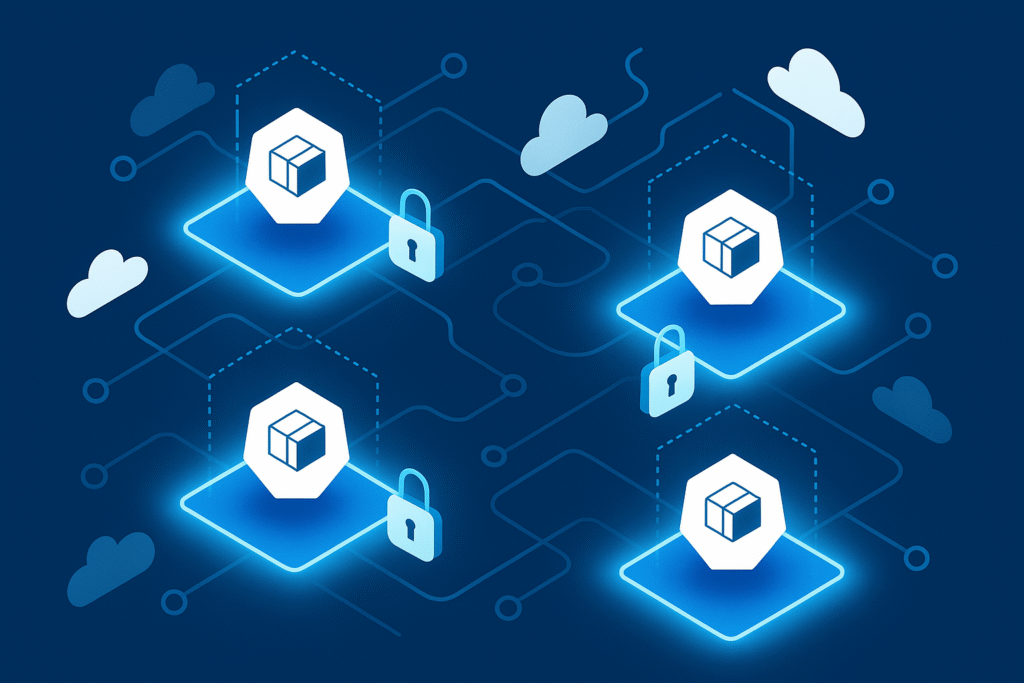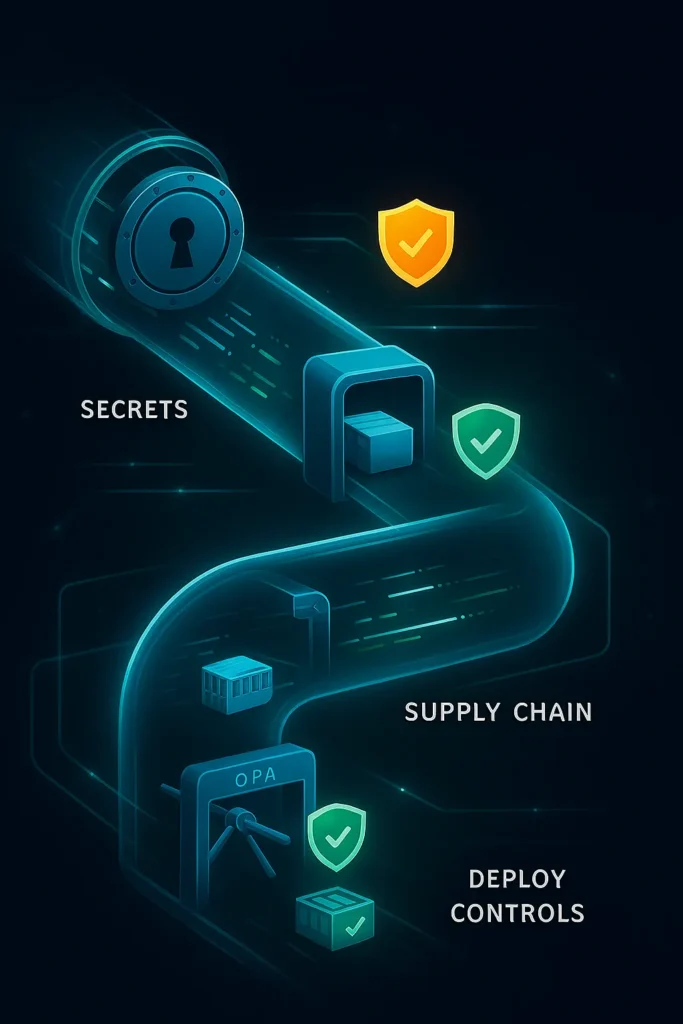When teams scale to multiple clusters, visibility gaps grow fast. Kubernetes was designed for flexible container orchestration, but in multi-tenant environments, security risks multiply. Enterprises that run multiple teams or customers in the same cluster face isolation, identity, and compliance challenges that go beyond single-tenant setups.
This article explains the most pressing multi-tenant Kubernetes security challenges, their business impact, and the DevSecOps practices that mitigate risk.
What Is Multi-Tenancy in Kubernetes?

Multi-tenancy means hosting multiple workloads or users in a shared Kubernetes cluster. Each tenant may be:
- A development team with isolated namespaces.
- A business unit sharing cluster resources.
- A customer in a managed platform or SaaS environment.
The promise is efficiency and cost savings. The challenge is ensuring strong isolation so one tenant cannot impact or access another.
Core Security Challenges in Multi-Tenant Kubernetes
1. Namespace Isolation Limits
- Risk: Namespaces provide logical separation, but they share the same API server and underlying cluster resources. Without strict policies, a tenant could affect another’s workloads.
- Example: Misconfigured
NetworkPolicyrules allow cross-namespace traffic. - Impact: Lateral movement and data leakage across tenants.
2. Identity & RBAC Complexity
- Risk: Kubernetes Role-Based Access Control (RBAC) often becomes overly permissive in multi-tenant clusters.
- Example: Developers granted
cluster-adminrights for convenience. - Impact: Escalated privileges enable unauthorized access to secrets or workloads.
3. Container Runtime Risks
- Risk: Tenants often share worker nodes. A vulnerable container runtime or misconfigured Pod Security can expose the underlying node.
- Example: Privileged containers mounting the host filesystem.
- Impact: Full cluster compromise affecting all tenants.
4. Network Segmentation Gaps
- Risk: By default, all pods can communicate across namespaces.
- Example: A compromised pod in Team A scanning services in Team B.
- Impact: Tenant isolation failure and regulatory non-compliance.
5. Resource Contention & Denial of Service
- Risk: One tenant can starve another by consuming excessive CPU, memory, or network bandwidth.
- Example: Missing
ResourceQuotaorLimitRangepolicies. - Impact: Service outages and SLA violations.
6. Compliance & Audit Complexity
- Risk: Standards like HIPAA, PCI DSS, and GDPR require strict isolation and logging. Multi-tenant clusters complicate evidence gathering.
- Impact: Fines or certification failures if tenant data cannot be segregated.
Best Practices for Securing Multi-Tenant Kubernetes
Enforce Strong Isolation
- Use dedicated namespaces per tenant with strict
NetworkPolicy. - Where possible, separate sensitive tenants into different clusters.
Harden RBAC & Identity
- Apply least privilege: granular roles instead of cluster-wide permissions.
- Integrate with external IdPs (e.g., Azure AD, Okta) for consistent identity.
Secure the Runtime
- Enforce Pod Security Standards or OPA/Gatekeeper for policy control.
- Disallow privileged pods and hostPath mounts.
- Scan container images with CI/CD-integrated tools.
Control Resource Usage
- Apply ResourceQuotas and LimitRanges per tenant.
- Use PodPriority & Preemption to protect critical workloads.
Improve Visibility & Logging
- Centralize logs with tools like ELK, Loki, or SIEM integration.
- Tag logs and metrics by tenant for clear attribution.
Meet Compliance Expectations
- Map cluster security to frameworks like CIS Benchmarks for Kubernetes.
- Automate audit evidence collection with tools like OPA, Kyverno, or CSPM platforms.
When to Consider Single-Tenant Clusters
While multi-tenancy saves costs, certain scenarios justify single-tenant clusters:
- Regulated workloads where isolation is mandatory.
- High-risk tenants with elevated access requirements.
- Performance-sensitive applications where noisy neighbors aren’t acceptable.
Conclusion
Multi-tenant Kubernetes environments bring efficiency but also heightened security risks. Without strong controls, one tenant’s misconfiguration can threaten the entire cluster.
DevSecOps teams should apply layered guardrails: namespace isolation, strict RBAC, runtime hardening, and continuous compliance checks. Pick the controls that best align with your compliance goals and business priorities.
Embed controls early and measure continuously — that’s how you enable multi-tenancy without sacrificing security.
FAQ: Multi-Tenant Kubernetes Security
What is the biggest risk in multi-tenant Kubernetes?
The lack of strong isolation between tenants. Misconfigured RBAC or network policies can allow cross-tenant access.
How can I secure namespaces in multi-tenant clusters?
Apply strict NetworkPolicy, enforce Pod Security Standards, and restrict privileges with RBAC.
Should I use a separate cluster per tenant?
For highly regulated or high-risk workloads, yes. Dedicated clusters reduce the blast radius.
Which compliance frameworks apply to multi-tenant Kubernetes?
CIS Kubernetes Benchmarks, NIST 800-190, HIPAA, PCI DSS, and GDPR all require strong isolation, auditability, and least privilege access.
No post found!


